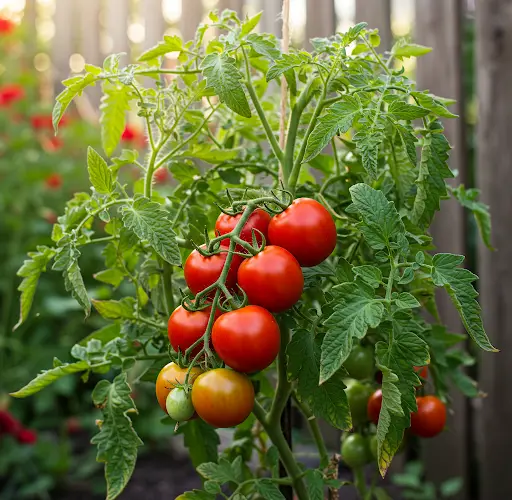An Innovative Way to Grow Tomatoes with Organic Fertilizer
Growing tomatoes is a rewarding endeavor, but it’s important to use the right methods to ensure they thrive and produce high-quality fruit. This unique method of planting tomatoes provides an innovative and sustainable approach to nourishing your plants throughout the growing season. By using organic materials, your plants will receive continuous nourishment from the soil, leading to healthier tomato plants and tastier fruits.
Step 1: Prepare the Planting Area
The first step is to dig a large hole in your planting area. If you are using raised beds or container-like structures, make sure that they are hollow at the base to allow the tomato roots to spread deeply into the soil. This setup promotes better drainage and provides more room for the roots to access nutrients.
Once the hole is deep enough, it’s time to add a key ingredient: kitchen waste. Kitchen waste, such as vegetable peels, fruit scraps, and plant-based leftovers, is an excellent natural fertilizer. It decomposes slowly, releasing vital nutrients over time, which supports the plant as it grows. Be sure to avoid adding cooked food, dairy, or meat as they can attract pests and decompose slowly.
Step 2: Add Epsom Salt for Magnesium and Sulfur
After filling the hole with kitchen waste, sprinkle some Epsom salt on top. Epsom salt is rich in magnesium and sulfur, both of which are essential for plant growth. Magnesium helps with photosynthesis, enabling the plant to produce energy from sunlight, while sulfur enhances flavor and aids in nutrient absorption. Adding Epsom salt gives your tomato plants the extra boost they need for healthy development.
Step 3: Add Compost for Beneficial Microbes
Next, add a layer of compost on top of the kitchen waste and Epsom salt. Compost is full of beneficial microbes that accelerate the decomposition of organic matter, releasing nutrients more quickly and making them available to the plant roots. It also improves soil structure, allowing it to retain moisture while promoting proper drainage. By adding compost at this stage, you create a nutrient-rich environment that supports the growth of your tomato plants.
Step 4: Cover the Hole with Soil
Once the compost is in place, cover the hole with the soil you previously dug out. This locks in the nutrients and prevents any unpleasant odors from the decomposing waste. Gently press down the soil to remove any air pockets. The soil should be loose yet firm, allowing the roots to grow freely while maintaining proper aeration.
Step 5: Add a Layer of Compost on Top
As the final step in the preparation process, add another layer of compost on top of the soil. This layer acts as a slow-release fertilizer, ensuring that your plants continue to receive nutrients as they grow. It also helps retain moisture, reducing the need for frequent watering and making the plants more resilient to drought.
Step 6: Plant the Tomato Seedlings
Now that the bed is prepared, it’s time to plant the tomato seedlings. Choose healthy seedlings with strong stems and well-developed root systems. When planting, bury the seedlings deeper than usual, covering part of the stem. This encourages the plant to grow additional roots, which makes it stronger and more stable. Water the plants immediately after planting to help them settle into the soil and eliminate air pockets around the roots.
Step 7: Apply Compost Tea for Extra Nutrients
To give your tomato plants an extra boost, apply compost tea. Compost tea is a liquid fertilizer made by steeping compost in water. It is packed with beneficial microbes and nutrients that promote healthy plant growth. Pouring compost tea onto the soil enhances microbial activity, improving nutrient availability and strengthening the plant’s immune system to prevent diseases. This step ensures that the young plants receive immediate nourishment, encouraging fast and healthy growth.
How This Method Benefits Tomato Plants
As your tomato plants grow, the kitchen waste buried in the soil will slowly decompose, releasing nutrients that support the plants throughout the season. This method reduces the need for frequent fertilization, as the plants are naturally fed by the decomposing organic matter. The result is healthier plants with more flowers and fruits, rather than excess leaves.
Additionally, the combination of kitchen waste, Epsom salt, compost, and compost tea creates a rich environment for plant growth. Your tomatoes will be better nourished, leading to sweeter and more flavorful fruits. This approach also improves soil health over time, making it more fertile for future plantings.
By using this natural method, you’re not only growing healthy tomatoes but also recycling kitchen waste that would otherwise end up in a landfill. It’s an eco-friendly and sustainable way to nourish your plants while improving the overall health of your garden.



